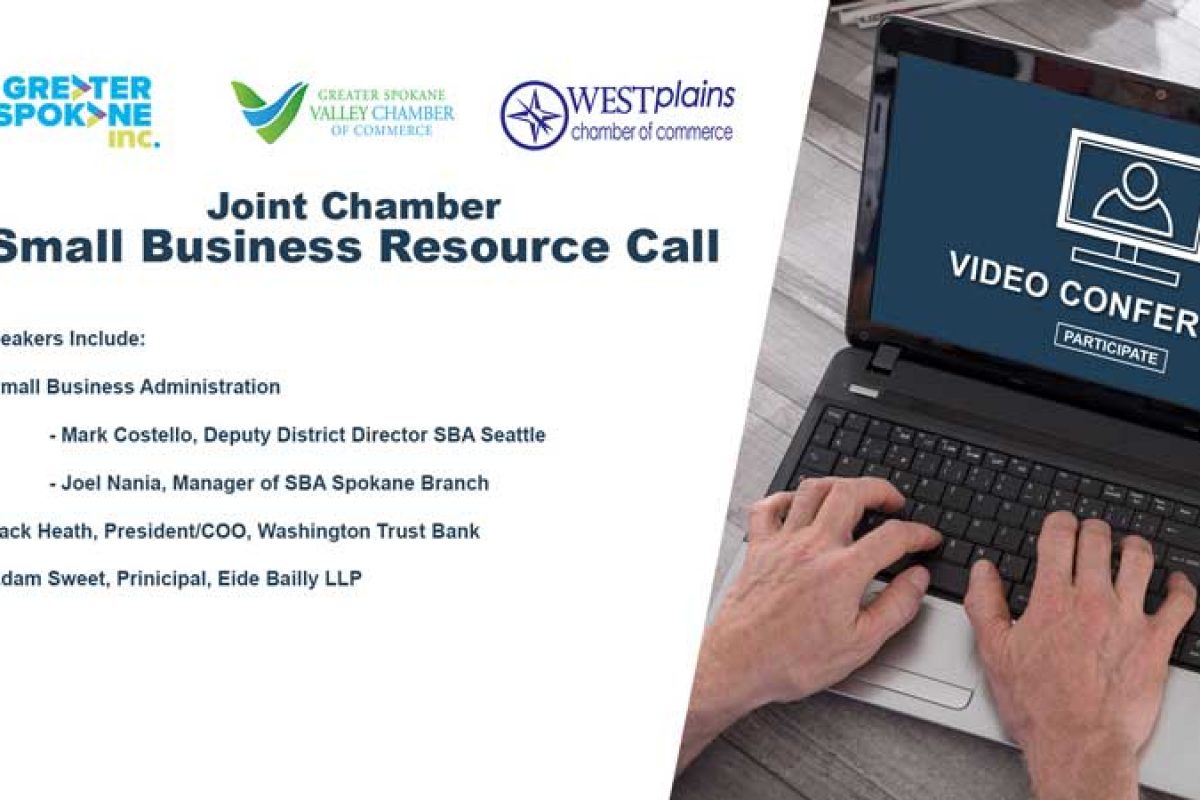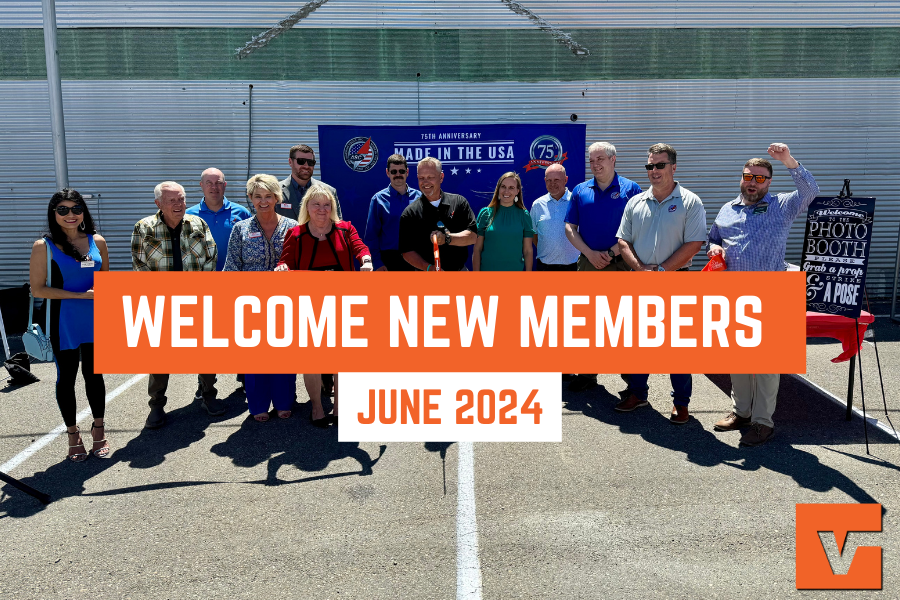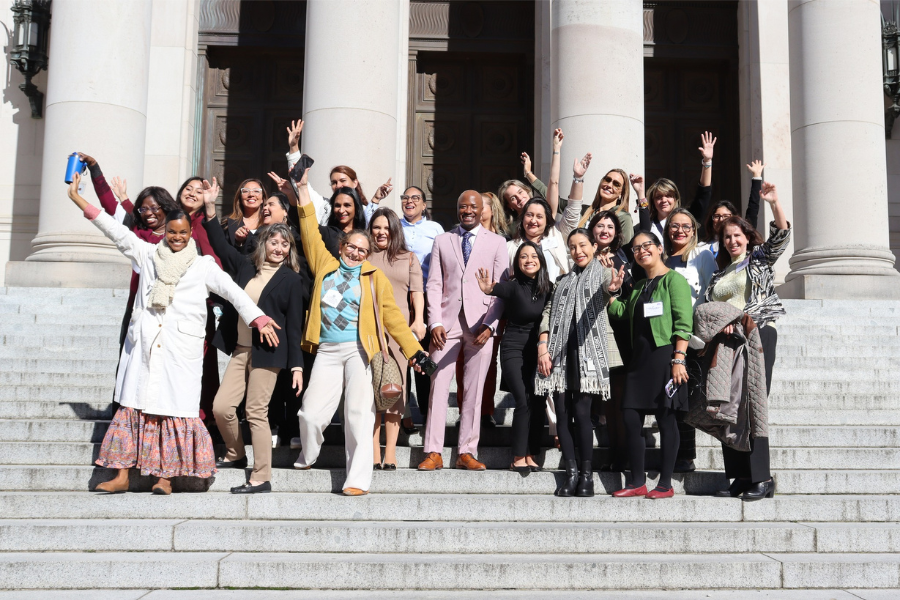Thank you to all of our presenters on the call.
Spokane County Business Resource Link: https://greaterspokane.org/covid-19/
Questions Directed to the Small Business Administration
Q: When will the SBA issue guidance around PPP Loan Forgiveness? The Covered Period has begun for many small businesses.
- A: The SBA is currently working on the guidance for applying for PPP loan forgiveness. Although they don’t have strict guidelines they are recommending that businesses keep detailed documentation of payroll and other expenses that businesses use the PPP funds for.
Q: When can we start applying for the grant forgiveness? Our 8 weeks starts on June 19th.
- A: The SBA is currently working on the guidance for applying for PPP loan forgiveness. Although they don’t have strict guidelines they are recommending that businesses keep detailed documentation of payroll and other expenses that businesses use the PPP funds for.
Q: Does health insurance for independent contractors count toward loan forgiveness under PPP?
- A: According to the Department of Treasury: An independent contractor or sole proprietor will itself be eligible for a loan under the PPP, if it satisfies the applicable requirements. So if you yourself are an independent contractor, and have received the PPP funds, then health insurance is considered a payroll cost as a benefit. However, if you are paying an independent contractor then, no. Any amounts that an eligible borrower has paid to an independent contractor or sole proprietor should be excluded from the eligible business’s payroll costs.
Q: One of our employees voluntarily left during our 8-week period. Will there be stipulation for having fewer FTE’s if they quit?
- A: If a member of your team has quit, or has been laid off, and the business has made a good faith effort in trying to offer that employee their job back then an interim rule will apply according to the Treasury Department. The business must document a good faith effort in trying to rehire that employee, and a rejection by that employee if they choose to do so. Another option that is recommended by the SBA is quickly try to fill that position in order to maintain the same payroll.
Q: Our business will only be able to open on a limited scale on or about June 15th according to the governor’s phase program. Therefore, we will NOT be able to rehire part time employees until that date and our PPP fund timeframe ends at that same time. So we will not be able to use all of the funds, we requested. Right now we would be on track to spend 73% of what we requested on Payroll/Utilities (80%/20% respectively).
Q1: Will the money with did spend in forgivable categories be forgiven? (As it is best understood today)
A1: Forgiveness amount will be determined by how much of the money spent is on forgivable categories like payroll expenses. The SBA has set a mark of 75% of the money allocated towards payroll costs for full forgiveness of that money. Businesses could be looking at partial forgiveness if that 75% mark was not hit, and money was spent elsewhere.
Q2: Do I need to return the 27% I don’t spend on those forgivable items?
A2: You certainly may return the money that you don’t use, and it will not be counted against you.
Q3: May I use that 27% on other items at the 1% interest rate over 2 years? Is there any limitation on what this money may be spent on?
A3: You may use that 27% on other items at your specified lending rate, however if what you spend it on does not fall under a forgivable expense then that money you spend on those items will not be forgiven.
Q: How do I forecast the percentage of the loan that will not be forgiven if 100% of my employees don’t return?
- A: SBA and Treasury intend to issue an interim final rule excluding laid-off employees whom the borrower offered to rehire (for the same salary/wages and same number of hours) from the CARES Act’s loan forgiveness reduction calculation. The interim final rule will specify that, to qualify for this exception, the borrower must have made a good faith, written offer of rehire, and the employee’s rejection of that offer must be documented by the borrower. Employees and employers should be aware that employees who reject offers of re-employment may forfeit eligibility for continued unemployment compensation.
Q: When should we expect more guidance from the SBA on the PPP Loan Forgiveness?
- A: The SBA is currently working on the guidance for applying for PPP loan forgiveness. Although they don’t have strict guidelines they are recommending that businesses keep detailed documentation of payroll and other expenses that businesses use the PPP funds for.
Q: The original PPP was structured to supplement/support payroll for an expected duration of around ~10weeks. If the assumptions around closures are extended beyond this timeline, are companies that have already been granted a PPP loan/grant, eligible for a second allotment of PPP if their payroll coverage required a longer extension?
- A: Unfortunately, the PPP loan can only be applied for once. Once you have received PPP funds you are not eligible to apply again.
Q: What happens if you use less than 75% of the funds for payroll? Is there a partial forgiveness?
- A: Yes, there is partial forgiveness. It is not all or nothing. Forgiveness will be based on how much of the loan is used for its intended purpose of maintaining your payroll.
Q: I am not clear on the timeline for expending the PPP funding. Had read that the payroll funds, to qualify as a grant and not a loan, had to be expended 8 weeks from date of deposit. But have since heard 10 weeks. Clarification?
- A: The eight-week period in which businesses must use loan proceeds for allowable uses starts as soon as the business receives the loan. Know your start date and calculate your end date. This is the covered period for which you’ll need to provide documentation of your allowable uses.
Q: Does payroll expenses include payroll tax payments and healthcare/benefits, etc.?
- A: Eligible payroll expenses are as follows:
1. Compensation
2. Vacation, parental, family, medical or sick leave
3. Allowance for dismissal or separation
4. Payment required for the provisions of group health care benefits, including insurance premiums
5. Payment of any retirement benefit
6. Payment of State or local tax assess on the compensation of employees
Taxes imposed or withheld under Chapters 21, 22, and 24 of the IRS code are not eligible for payroll under the PPP
Q: Is it 75% of what was spent on payroll or 75% of what was borrowed on payroll?
- A: It must be 75% of what you spend the money on needs to be allocated towards payroll.
Q: Are there limitations on what that amount can be used for?
- A: Allowable uses of the loan money can be found below:
- Payroll costs
- Costs related to the continuation of group health care benefits during periods of paid sick, medical, or family leave, and insurance premiums
- Employee salaries, commissions, or similar compensations
- Payments of interest on any mortgage obligation
- Rent
- Utilities
- Interest on any other debt obligations that were incurred before the covered period.
Q: I received our $1000 grant weeks ago and nothing since. does that mean we won’t receive the loan? I call for updates and SBA can’t give me a status update on our account.
- A: Loan response times have varied. Just because you have received your grant and not your loan money does not mean that the loan isn’t coming. The SBA is working as fast as they can to get the money out, and there is a backlog of EIDL loans.
Q: Will businesses receiving the PPP loan need to pay taxes on it?
- A: As of now, the forgivable portion of the PPP loan is not taxable income, but as of now the IRS has stated that the related expenses will not be deductible, unless changed by an act of Congress.
Q: If I received a PPP loan which covers a 8 week period. Since it looks like shutdown will last longer than 8 weeks, can we apply for another loan to cover a longer time frame?
- A: Unfortunately, rules dictate that you can only apply for the PPP once. You can still apply for other SBA funded loans.
Questions directed to Jack Heath, President/COO, Washington Trust Bank
Q: What are you seeing in mortgage/commercial loan forbearance, projections for future foreclosures?
- A: We are seeing lots of deferrals (not forgiveness) of principle and interest for commercial clients and consumers. These deferrals are allowed if the financial challenge is related to Covid-19.
A few factors seem to indicate not huge foreclosures expected going forward because these payments are pushed to the end of the loan and don’t have to be caught up in the near term, the supplement of $2,400 a month for unemployment, the PPP program and other liquidity programs have injected a lot of liquidity in the system.
We will not have good visibility going forward of clients with issues because of the number of deferrals provided to clients. Past due payments are a key indicator of financial stress and due to deferrals those will not happen for the next six months.
Stressed sectors will be retail and hospitality and there will be business failures and issues in these sectors.
Q: Are you seeing higher qualifying credit scores for home buyers? Hearing some banks have raised qualifying limits to 720?
- A: Washington Trust will not be raising the qualifying limits, but some banks have raised the qualifying rates on second loans.







